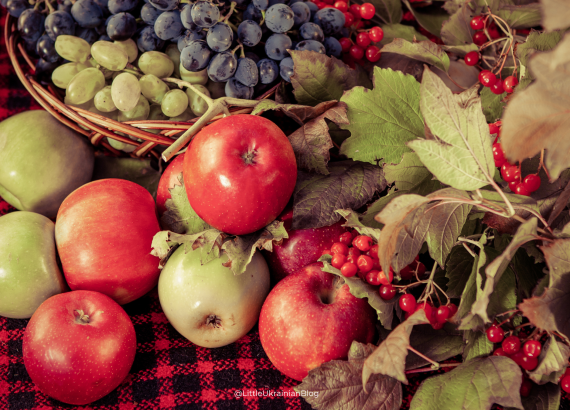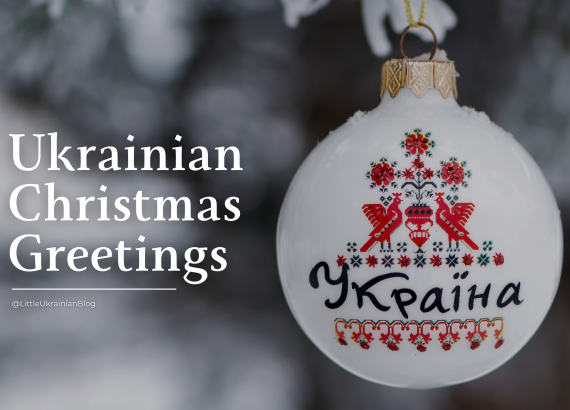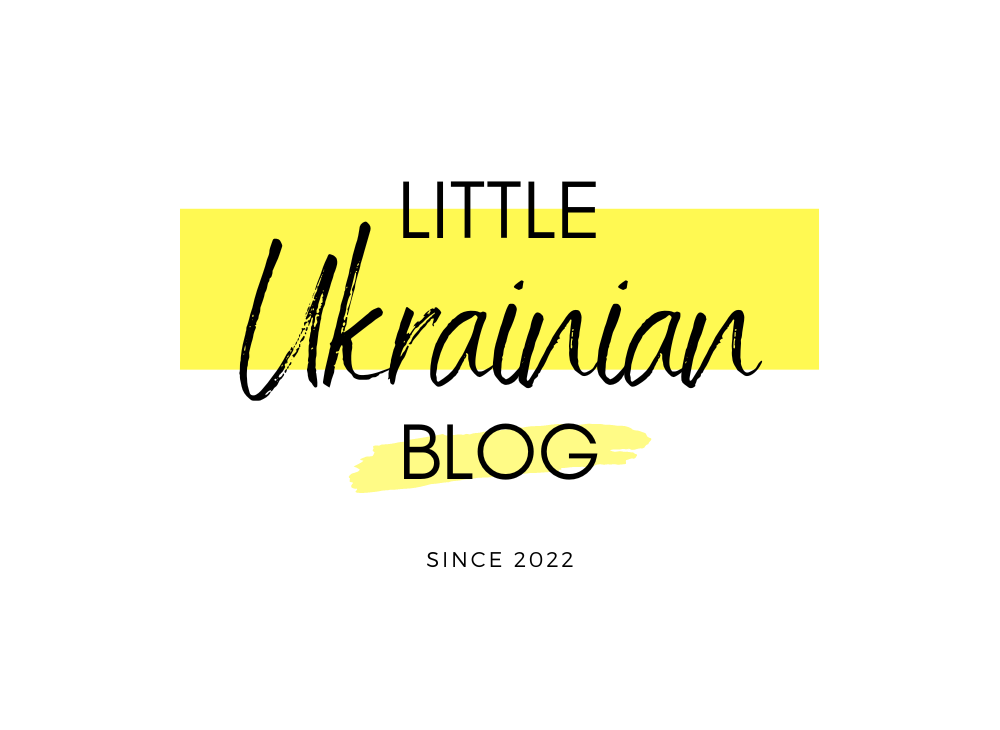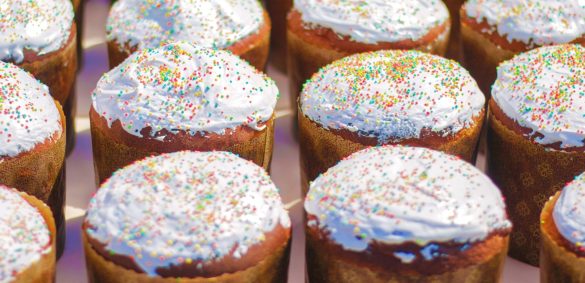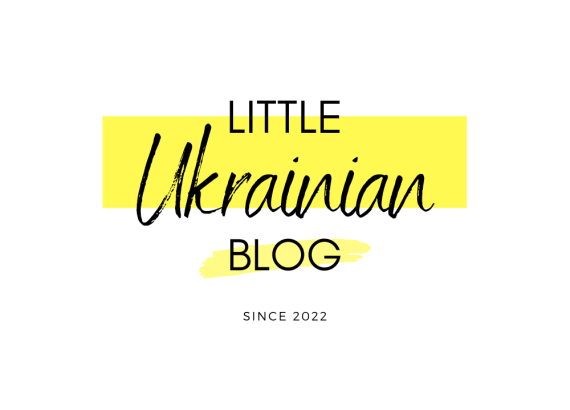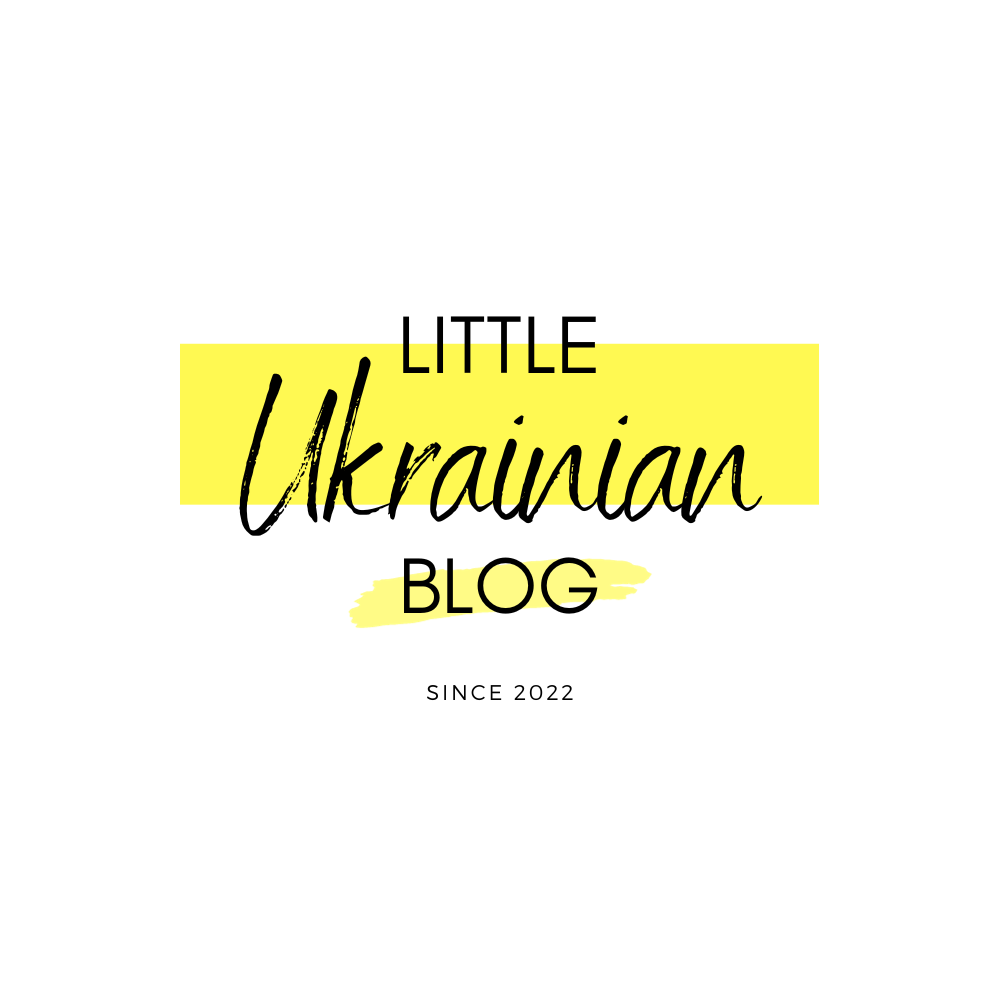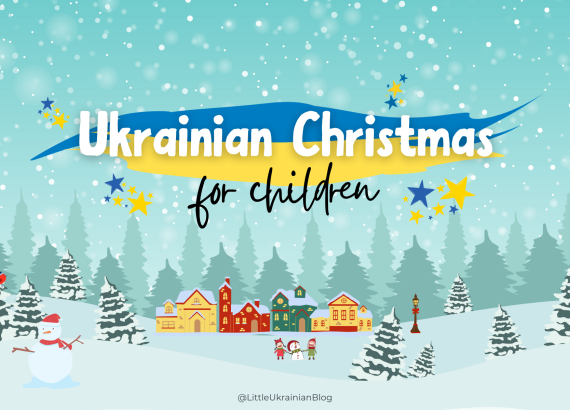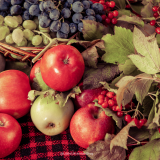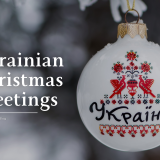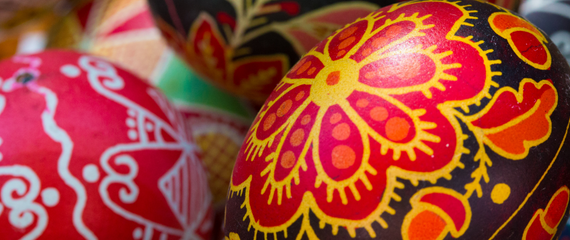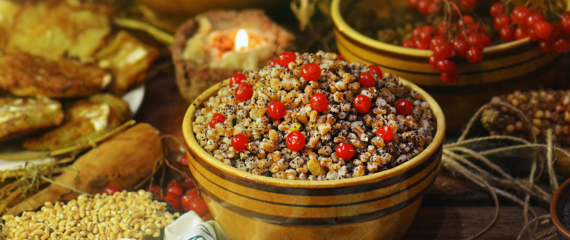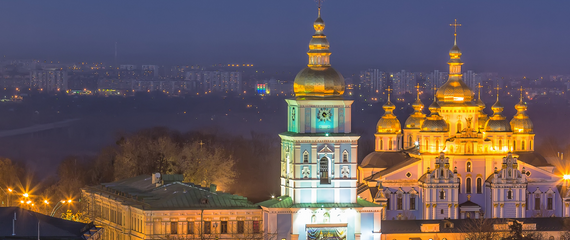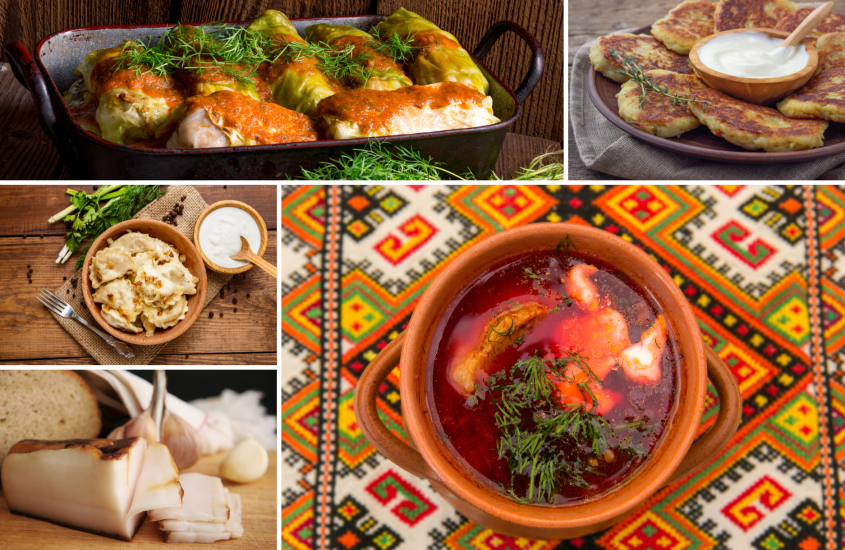Ukrainian Easter Basket
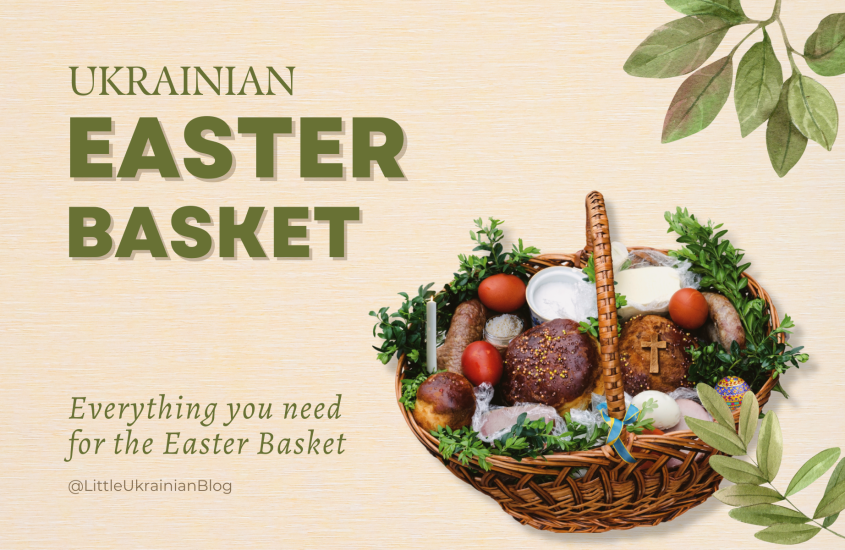
Ever wondered how to make a traditional Ukrainian Easter Basket? Look no further! From Easter bread, to eggs, to sausage, each item in the basket is highly significant and symbolic. We’ve compiled your go-to guide for what to include in your basket. For more information on Ukrainian Easter traditions, check out our blog post here.
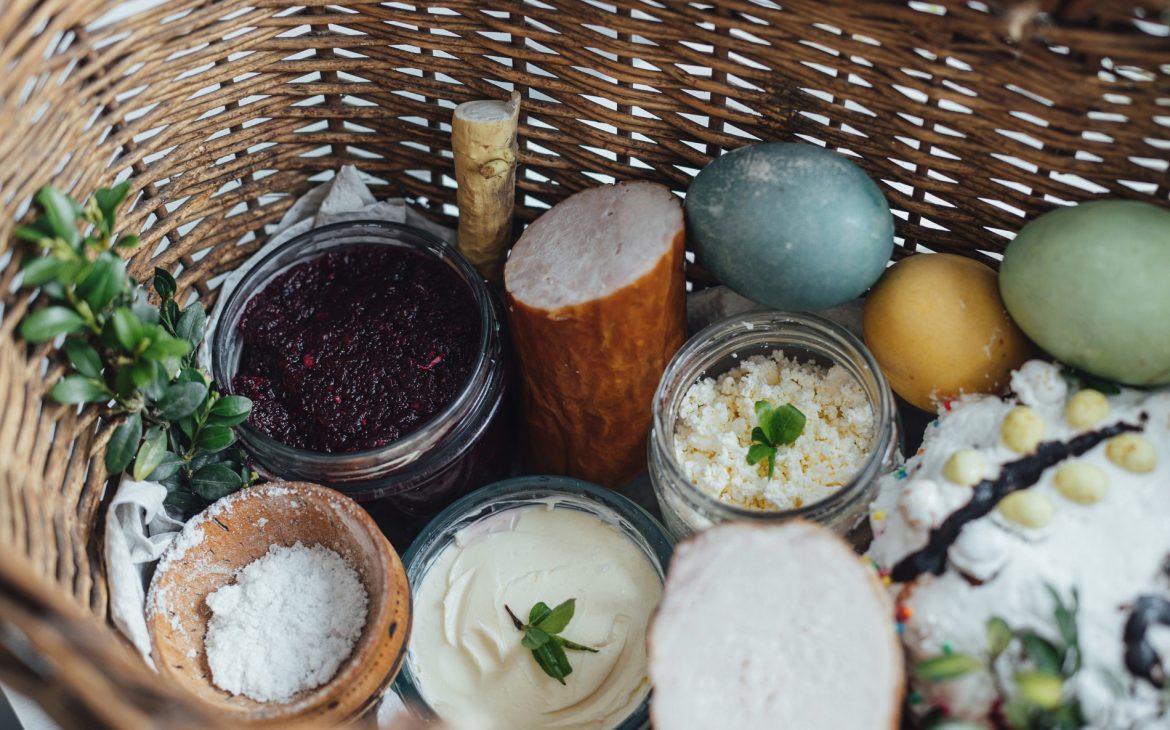

The Easter Basket
Великодній кошик
The basket is filled with a variety of symbolic foods and items that represent the renewal of life and the resurrection of Jesus Christ. So, what needs to be included in the basket?
- Paska: Ukrainian Easter bread.
- Pysanky: Traditional decorated Ukrainian Easter eggs.
- Krashanky: Traditional Ukrainian Easter eggs, typically a solid red colour.
- Dairy: Such as butter and cheese.
- Meat: Kovbasa (sausage) and ham.
- Horseradish.
- Salt.
- Rushnyk & a candle.
Read on to learn about the fascinating history, symbolism, and deep cultural significance behind each item listed above.

Paska
Паска
Paska is a traditional sweet Ukrainian Easter bread, made with eggs and butter once a year. The ingredients and recipes used to make Paska vary between regions and even families, but typically include flour, yeast, sugar, eggs, butter, milk and sometimes dried fruits or nuts. Typically, however, the Paska recipe used is one passed down through the maternal family line. Like all dishes in the Easter Basket, Paska is highly symbolic. The bread represents the presence of God in our lives, and also the joy that comes with it.
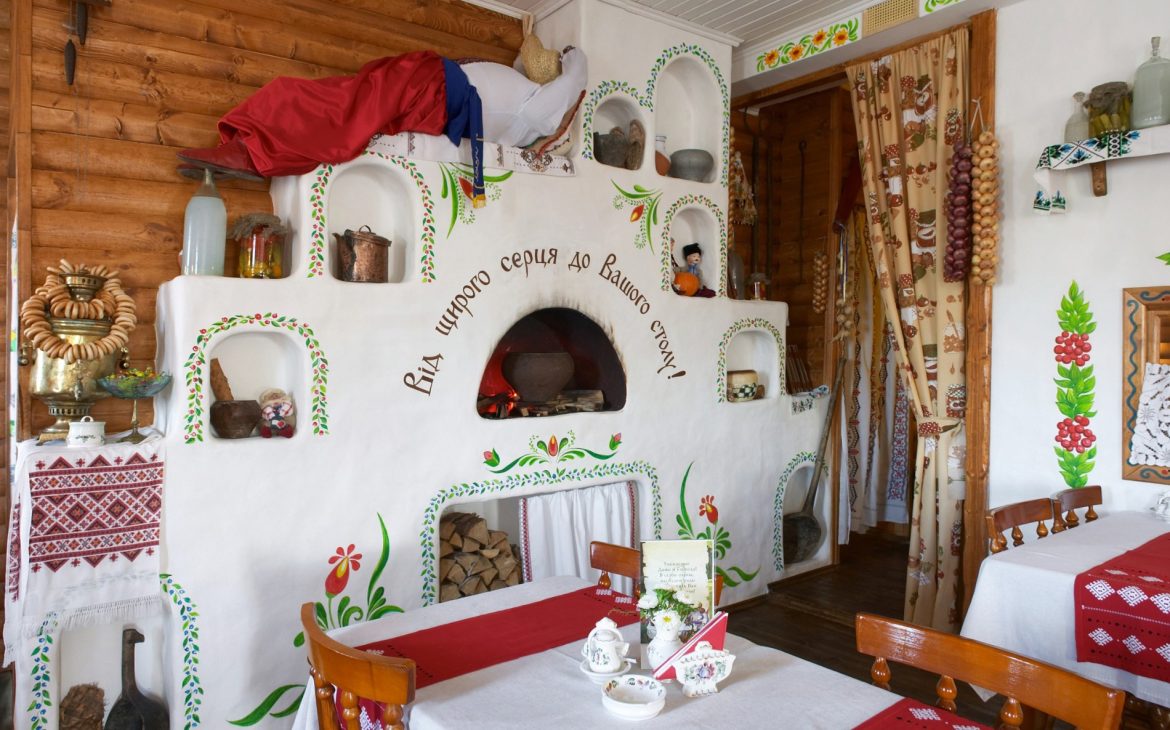
The baking of the Paska traditionally takes place on Holy Thursday, the Thursday before Easter Sunday. However, as time evolves it is becoming increasingly common to continue this tradition on different days, as long as it is ready in time to include in the Easter Basket!
This process is a highly symbolic event with many rituals. In the past, a stove just as seen in the image above was used, with some branches of the consecrated pussy willow also thrown in to the fire. The woman baking the bread would first change into clean clothes and pray. The process is accompanied with songs and a cheerful mood, as Ukrainians believe that such dishes should only be prepared when you are in a good mood!
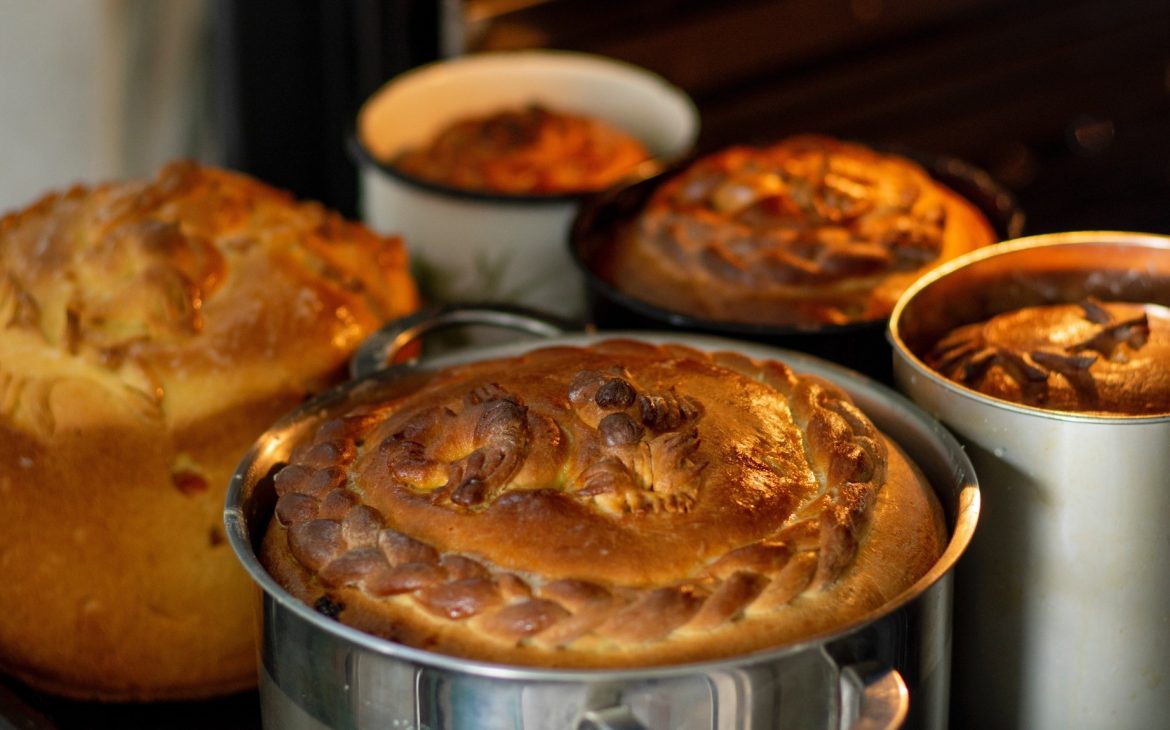
There are two types of Easter bread that are included in the basket. The first, which is known as Paska, is round like the sun and decorated with religious symbols made from the dough. The other is a tall, cylindrical shape which is usually topped with icing and sprinkles, and is commonly referred to as Babka.
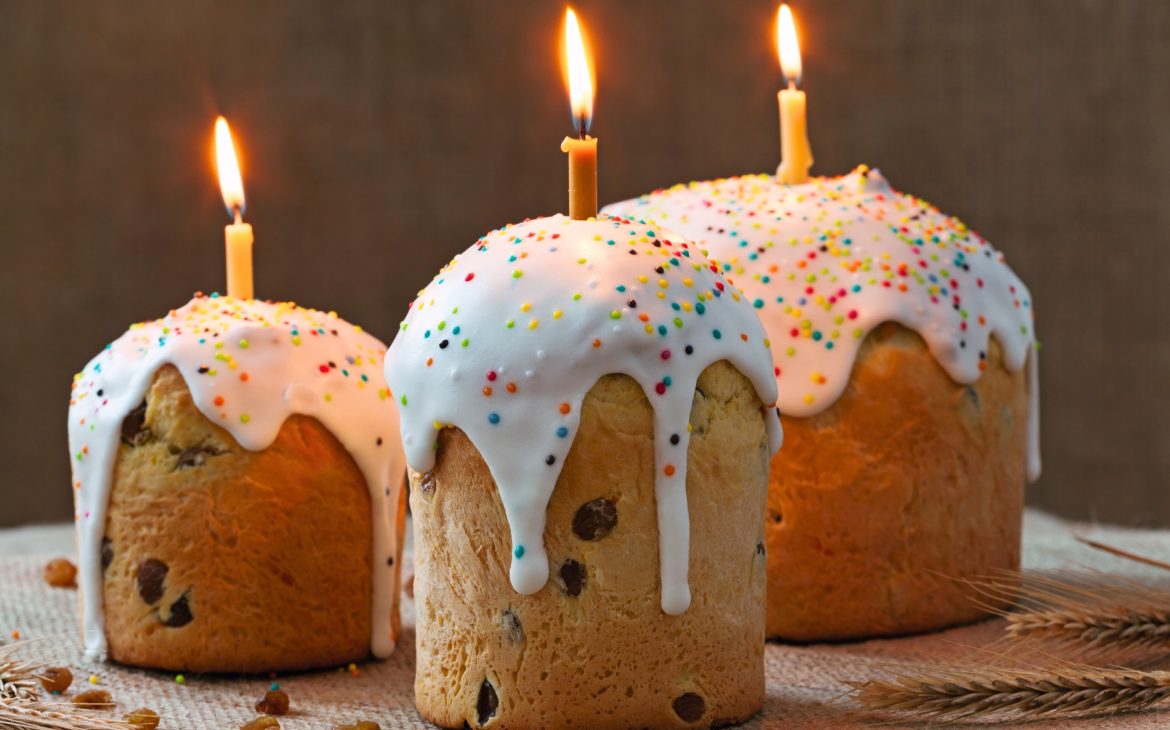

Pysanky
Писанки
Pysanky from the singular Pysanka (Писанка) is a traditional Ukrainian Easter egg, decorated with symbols written in wax and dipped in different colours of dye. Pysanky are included in the Easter Basket as eggs represent rebirth and the Resurrection. Each colour and symbol used in a design is highly symbolic. Unlike the Krashanky eggs, these eggs are not eaten and are considered an important amulet. Historically, there were to be 13 eggs in the basket to represent Christ and his 12 apostles.
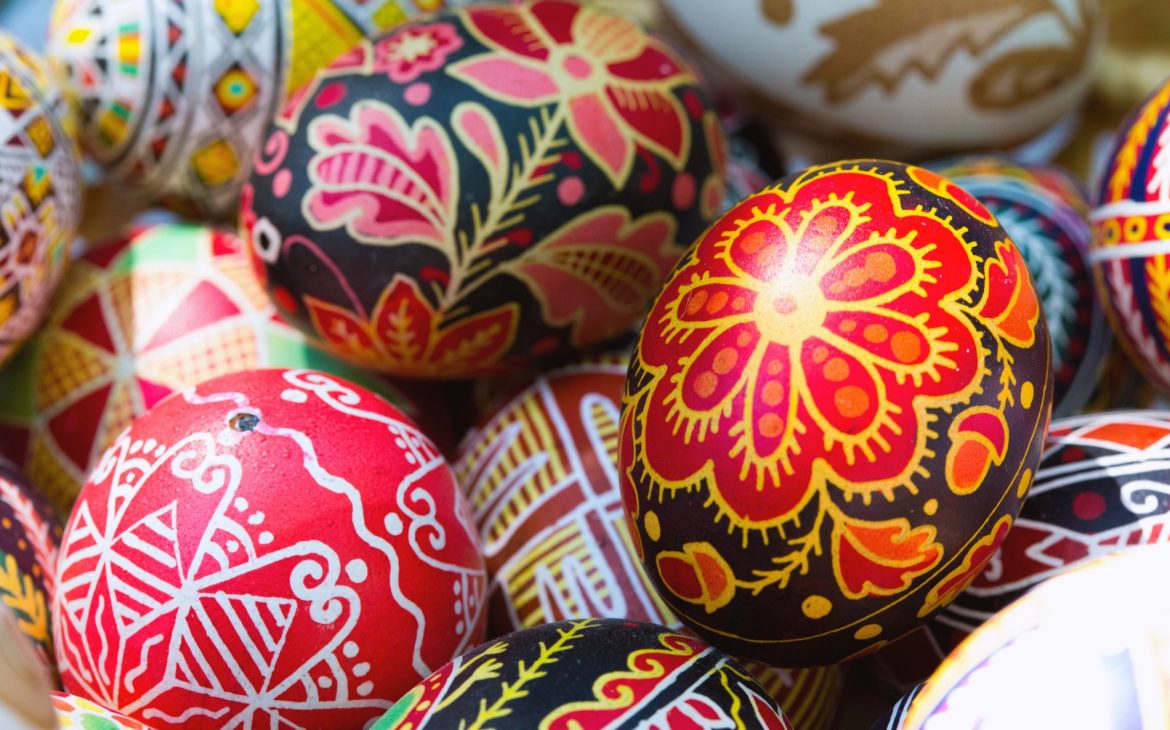

Krashanky
Крашанки
Krashanky are boiled eggs which are dyed a solid colour with natural ingredients. These eggs are usually eaten first during the Easter Breakfast. Traditionally, these eggs were dyed red with onion skins or beetroot, to symbolise Christ’s blood.
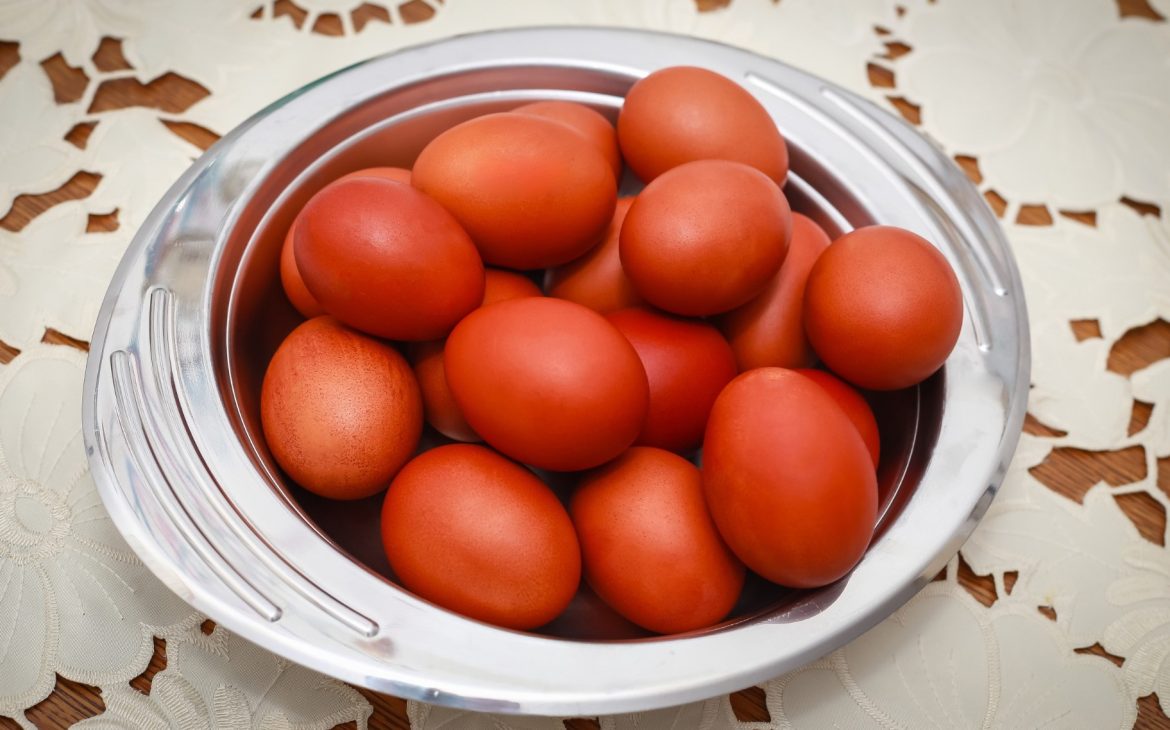
As times evolve, you may even come across different colours of Krashanky. Typically, these are still produced with natural dyes. For example, yellow eggs can be achieved with turmeric or birch leaves, whereas blue is from blueberries!
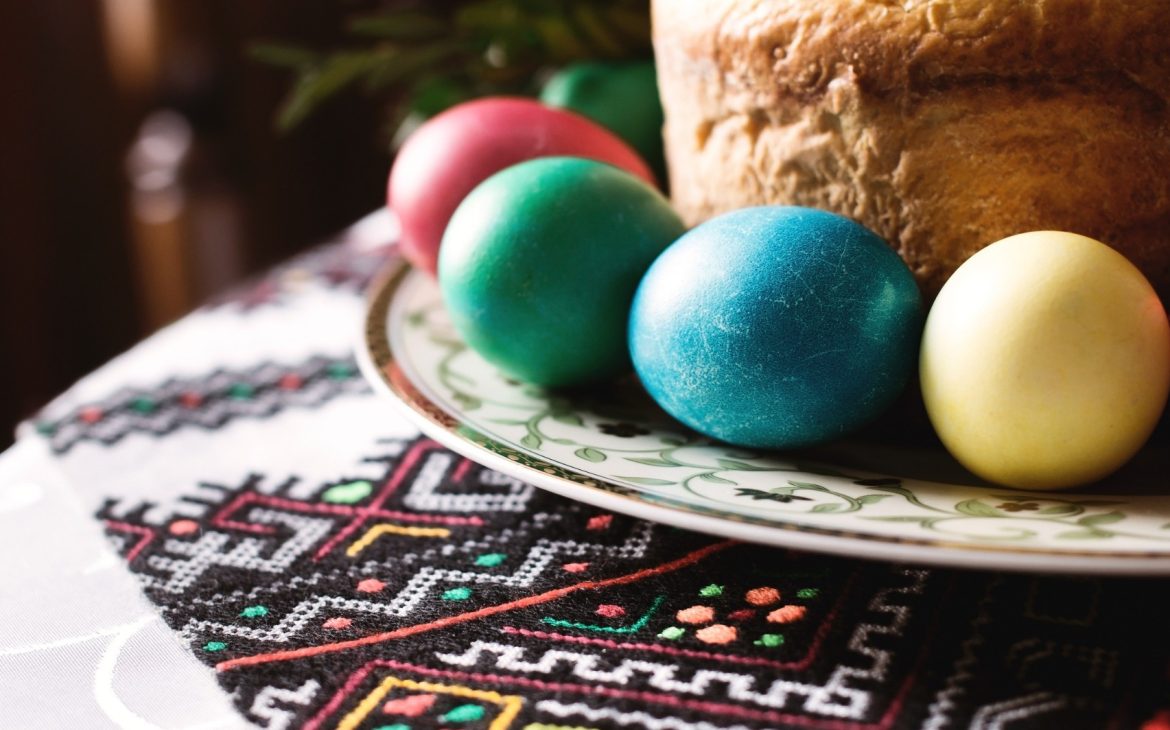

Dairy Products
Молочні продукти
Dairy products are those provided by nature, symbols of love and care. These products are placed in bowls and sometimes small crosses are drawn on them.
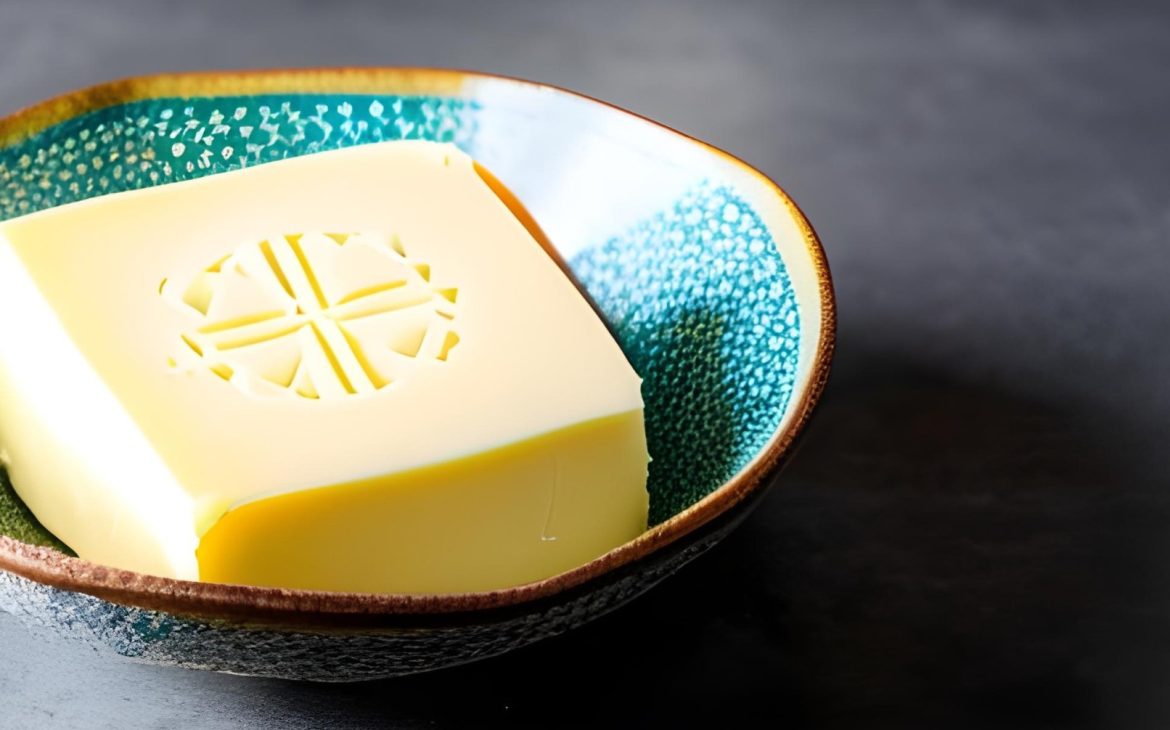

Meat Dishes
М’ясні страви
The inclusion of meat products in an Easter basket originates from the Old Testament and the sacrificial lamb, which marks an end to the period of Lent. The type of meat used is usually dependent on which region people are from, but there should be no blood in whichever is decided upon.
Sausage (Ковбаса): The inclusion of sausages reminds us of God’s favour and generosity. Sausages can typically be found in Easter Baskets from central Ukraine, alongside baked Ham (Шинка).
Easter Lamb (Великодній Агнець): Some regions include actual lamb in their basket. Having sacrificed himself for us and our sins, Jesus himself becomes this sacrificial lamb.
Baked cockerel (Запечений півень): In Western Ukraine, a roasted rooster was also placed in the Easter basket, to symbolise the first roosters that announced the Resurrection of Jesus Christ.
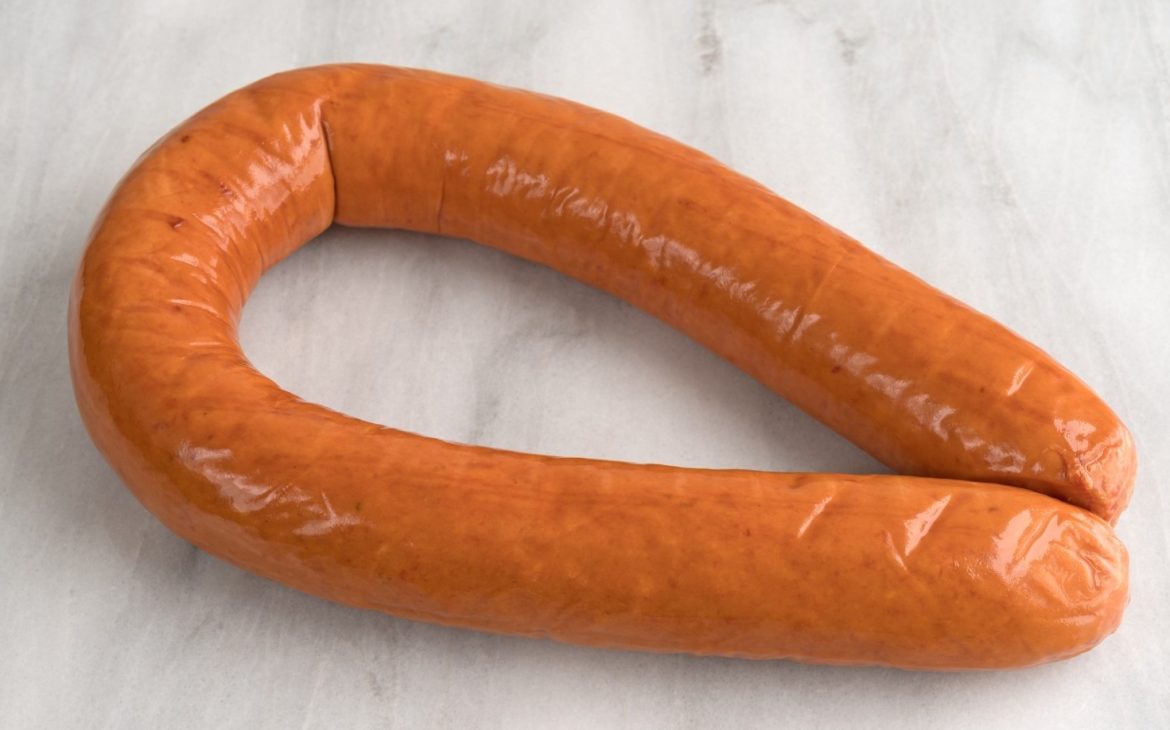

Horseradish
Хрін
Horseradish is also included in the Easter basket. The root is grated into a bowl, and is commonly mixed with grated beetroots. The bitterness of the horseradish symbolises Christ’s suffering and Crucifixion, whereas the sweetness of the beets represent his Resurrection; the sweetness of eternal life.
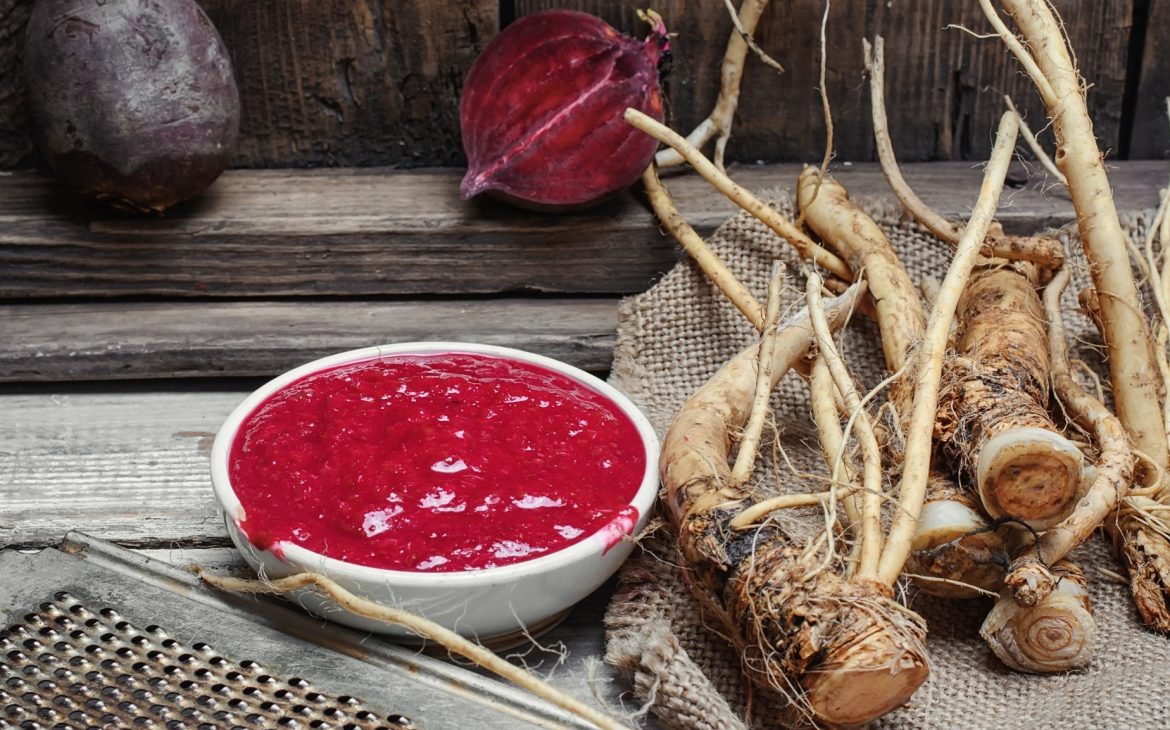

Salt
Сіль
Salt is highly symbolic across Ukrainian culture and often considered a talisman. You may have even heard of the ancient Ukrainian welcome still continued today, which consists of bread and salt. By including salt in the Easter Basket, it reminds us that we are salt of the Earth. In Ukrainian culture, salt is also a symbol of fullness and abundance.
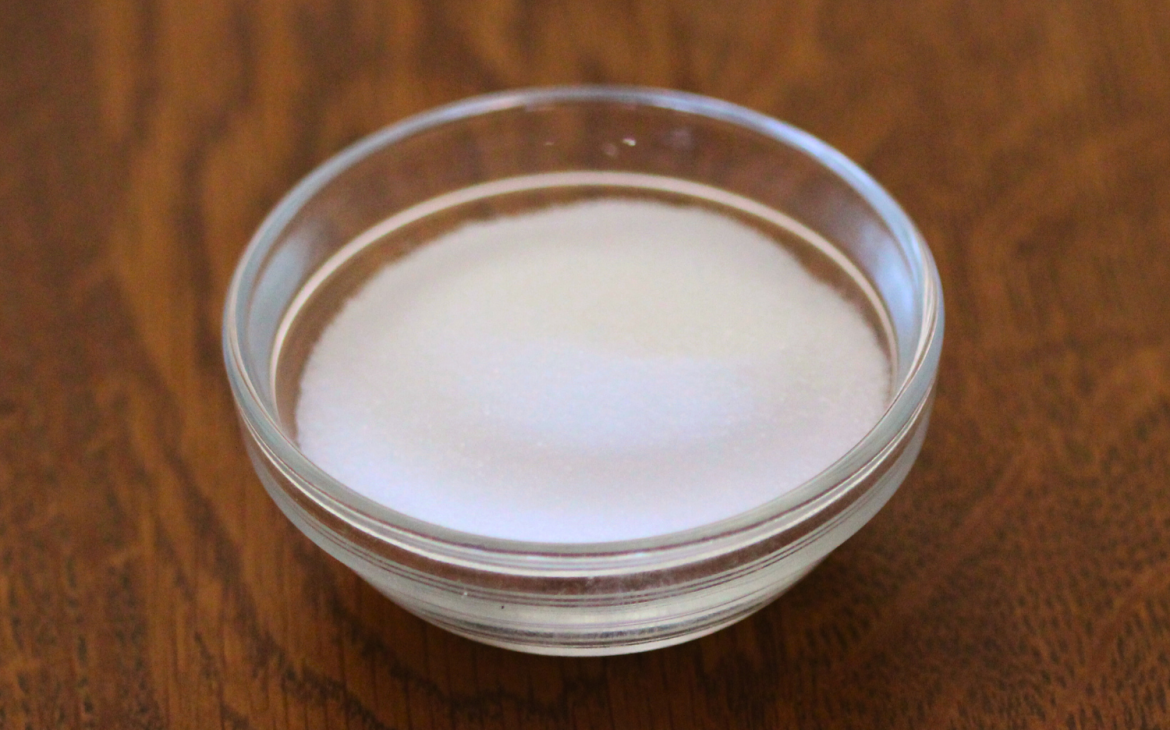

Easter Rushnyk
Великодній рушник
A Rushnyk is a traditional Ukrainian embroidered cloth. In the past, the embroidery took place on Holy Thursday, always after a prayer and in good spirits.
The Easter cloth is considered a symbol of awakening and renewal of life, and depicts several of the prominent Easter symbols such as the Paska and Pysanky. You may also see the letters «ХВ» embroidered, or even the full Easter phrase «Христос Воскрес».
The Rushnyk is placed over the top of the basket and later on the Easter table for Sunday’s meal.
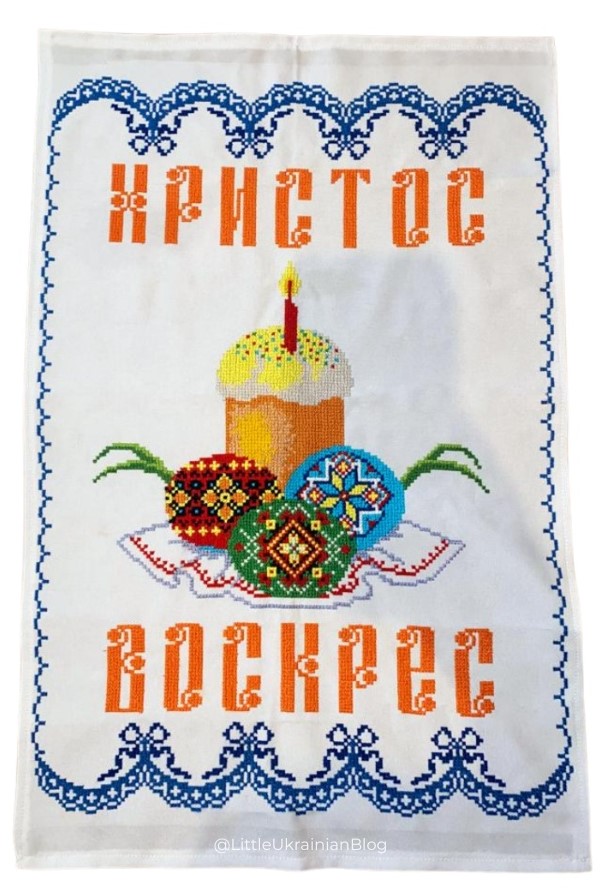

Greenery
Вічнозелена рослина
Decorating the basket with greenery symbolises eternal life and immortality. Again, the choice of greenery differs between regions so there is no “correct” choice. In central Ukraine periwinkle (барвінок) is common, whereas in western Ukraine you may find boxwood branches (самшит) in the basket. Across diasporas, we have even seen people incorporate some of the consecrated pussy willow branches from Willow Sunday.

Typical customs
It’s important to remember that no consecrated product from the basket can be thrown away, which is why it is not customary to include lots of eggs, or several Paskas. Even eggshells are not wasted, and are later buried under trees to encourage good harvests. You may also hear or see other cutting the consecrated products with a knife, which is not permitted.
What cannot be included?
Alcohol and wine are traditionally not permitted by priests, and it should be noted that there is no Easter prayer for the blessing of wine. Knives should also not be included.

The Blessing of the Baskets
Освячення великодніх кошиків
The consecration of the Easter Baskets takes place on Easter Saturday. The priest will bless each basket with Holy Water and a special prayer. You may even see the beautiful sight of all the baskets lined up outside the Church! The contents cannot be enjoyed until the following day after the Church service, at the ‘Family Easter Breakfast‘ – Великодній родинний сніданок.
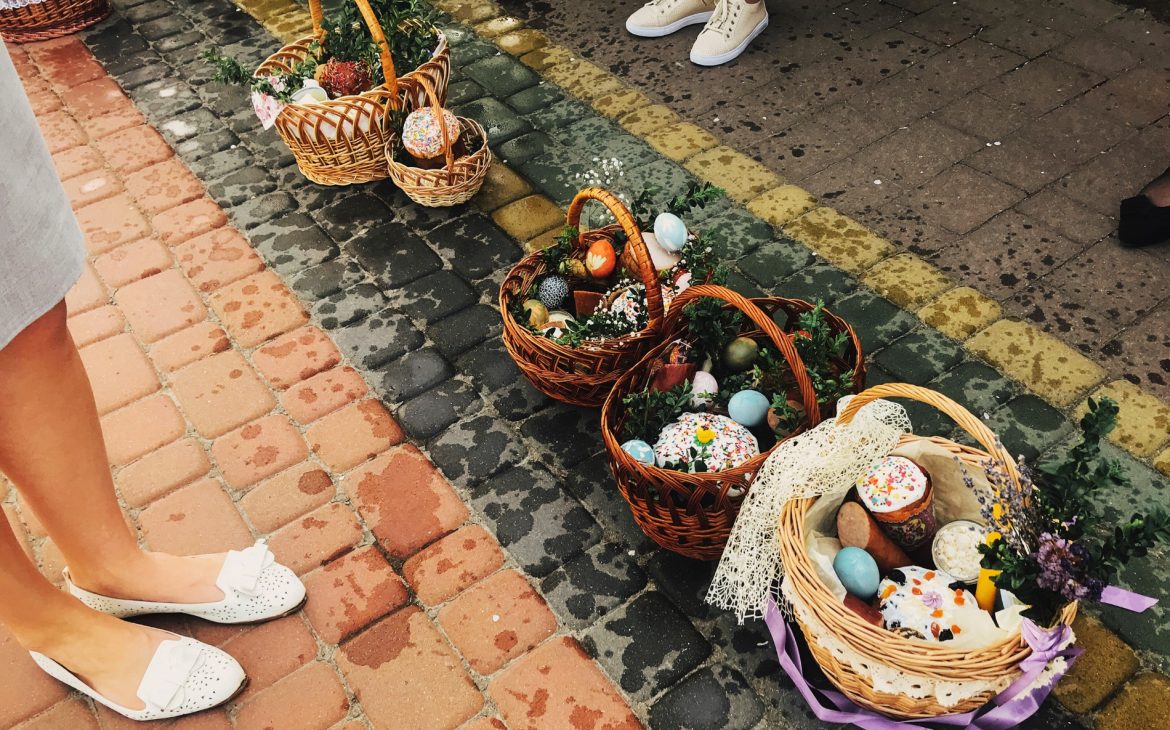

Вітаємо з Великоднем!
We hope you enjoyed this guide to a traditional Ukrainian Easer Basket! Are you making a basket this year? Follow us on Facebook and share your Easter photos!
